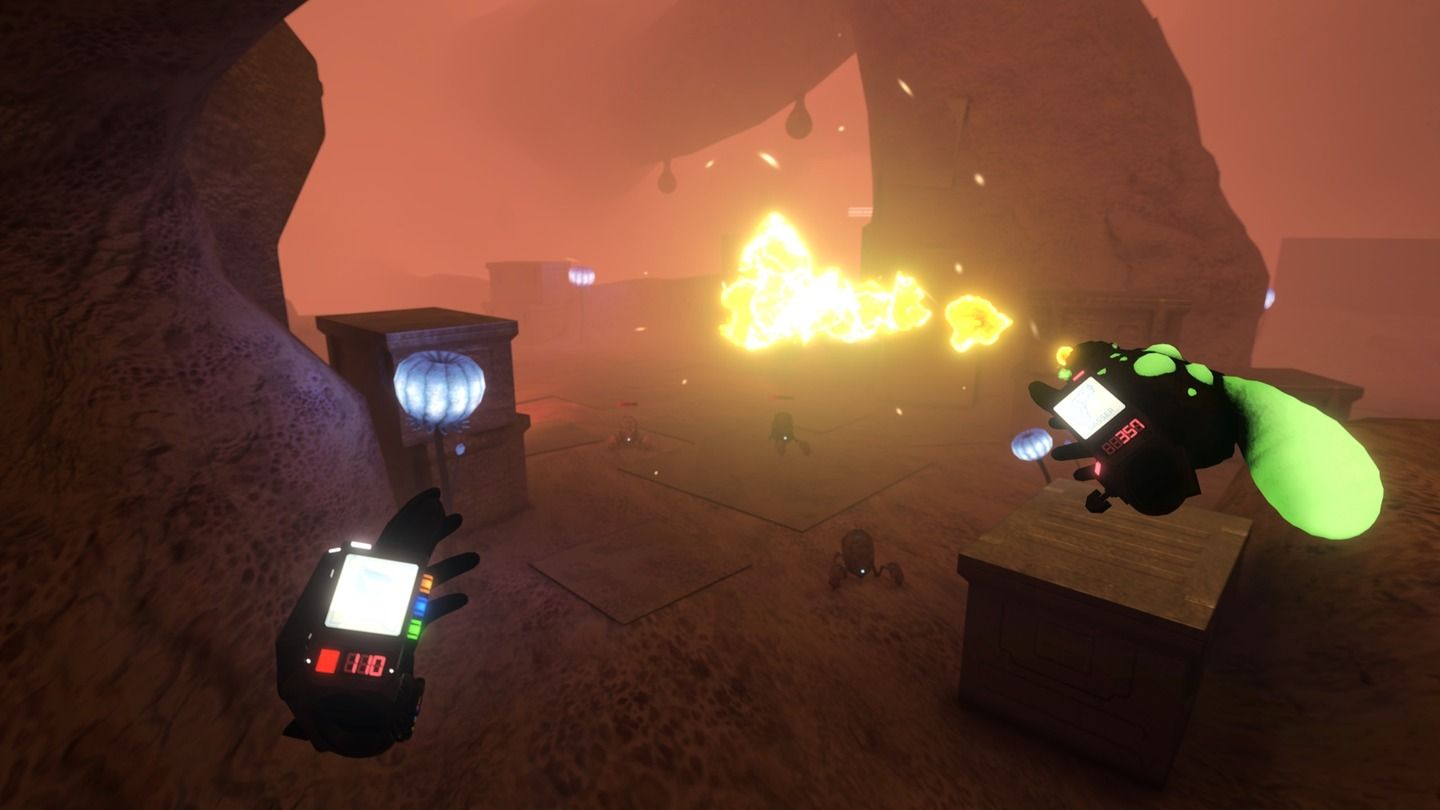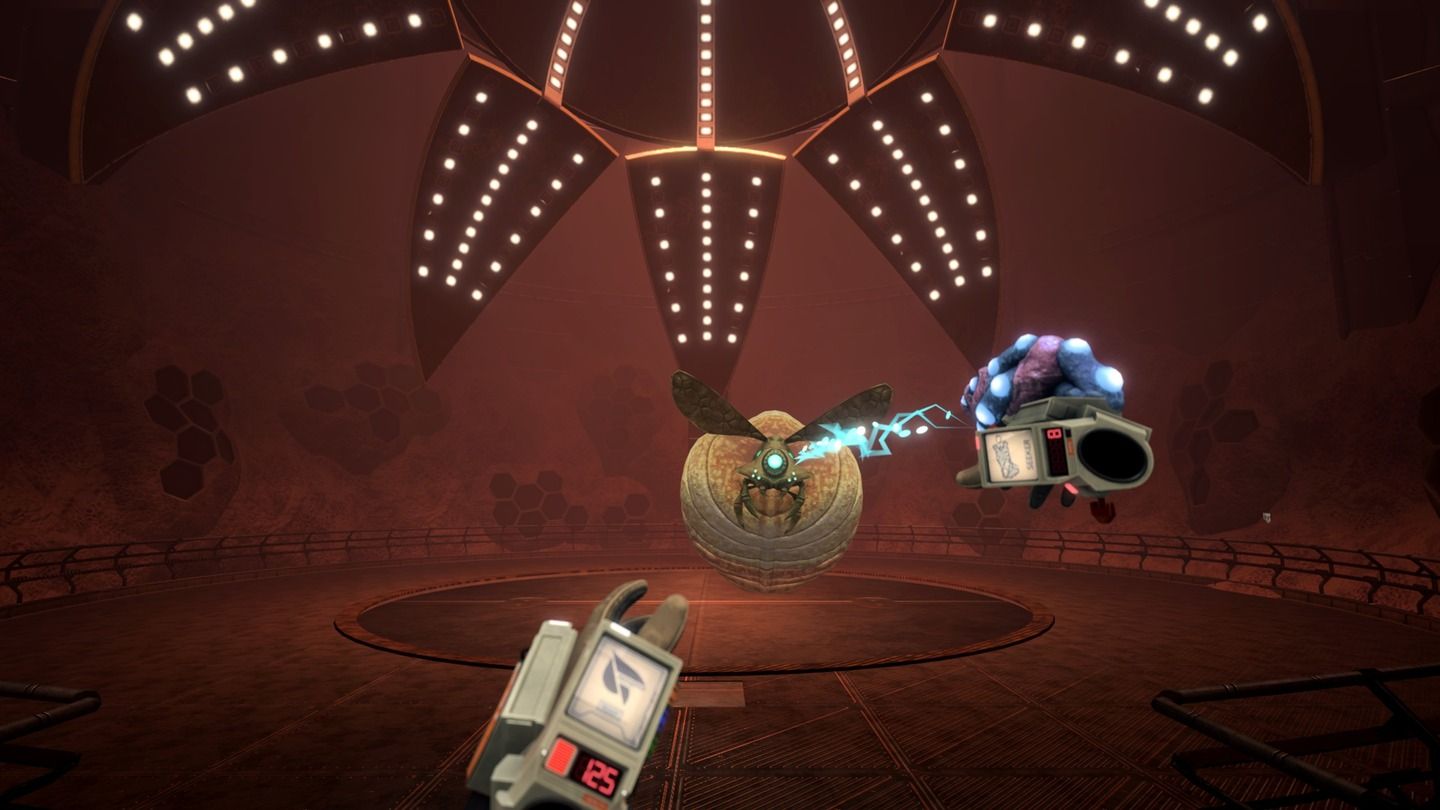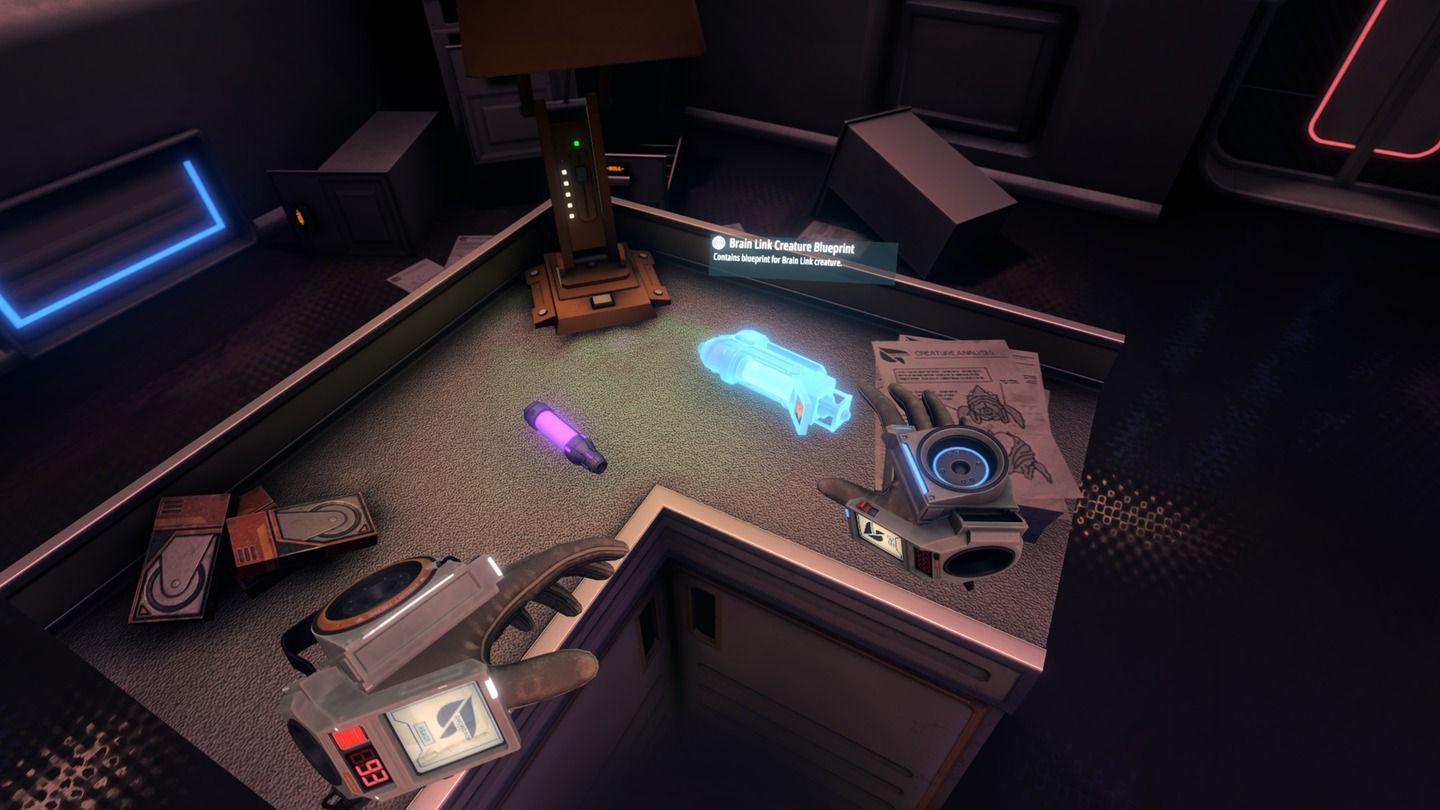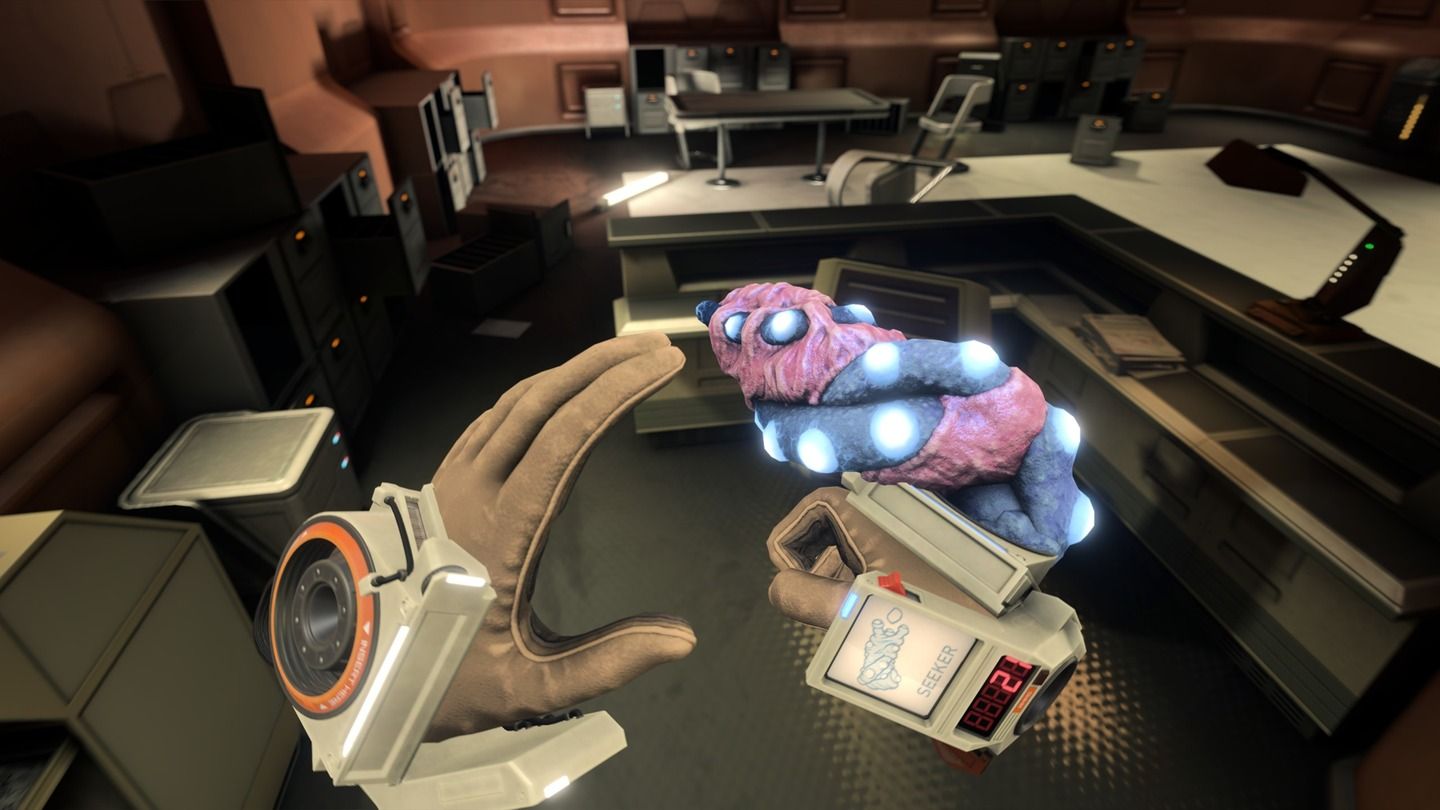Genotype is an ambitious story-driven sci-fi shooter recently released on Quest. Read on for our full review.
Wearing its inspirations on its sleeve, Bolverk Games’ latest VR title is a love letter to classics like Metroid Prime. Taking a novel approach to the genre, Genotype forgoes conventional firepower, instead asking the question: who says you need guns to be a shooter?
Platforms: Quest (Review conducted on Quest 3 & Quest 2)
Release Date: Out now
Developer: Bolverk Games
Price: $29.99
Snow Business
Genotype begins with the player out on a routine inspection of Antarctic communications stations. Thrown off course by a blizzard, things quickly go wrong and you soon find yourself stranded in a derelict research station. Guided by a mysterious voice known only as ‘William’, you begin exploring the labyrinthine facility in the attempt to find a way home.
Within short order, the site proves to be far from an ordinary research facility – the initially desolate halls quickly become hostile. Throughout an approximately six hour-long campaign players will find themselves facing off against a host of creatures born of scientific hubris, evolved to kill.
The narrative itself is atmospheric, slowly revealing itself over time and gradually add depth to the characters. It’s hardly groundbreaking but there’s some good character work that’s solid enough to ground the campaign. This is in no small part due to the surprisingly excellent voice acting, which does most of the heavy lifting in terms of connecting the narrative with the environment around you.

Baby It’s Cold Outside
Genotype embraces a fairly non-linear structure, similar to games like Metroid Prime. Maps are reasonably open to exploration, providing players with a freedom to decide which parts of the facility to investigate next. There are of course some limitations, with certain areas remaining inaccessible until specific items are discovered.
This open-endedness does give a refreshing sense of player agency. However, the flip side is the game feels lacking in meaningful escalation of difficulty. With so much available from the beginning, everything is achievable with your early game attributes. This translates to an inverse difficulty curve – regardless of which path you take, the game just gets easier as you proceed through it.
The level design is functional, but fairly generic, with large stretches of time spent wandering almost identical hallways. Similar to games like Yupitergrad, the setting of an abandoned facility comprised of repeating corridors tends to become repetitive after an unfortunately short time. It makes the pacing drag in latter sections and makes the overall campaign length feel a little padded out.

The Gloves Are Off
That said, one of the Genotype’s more interesting gameplay features is found in its approach to weapon handling.
Genotype is a sci-fi shooter, make no mistake, but you won’t find any guns to play with in this sub-zero setting. Instead, players are armed with a unique set of gloves that allow you to “bio-print” an array of weaponised creatures. As you progress through the campaign you will find blueprints for new creatures, each with their own unique ability.
Bio-prints will be your lifeline during exploration, with abilities that range from simulating a sidearm gun to transferring your consciousness into a scuttling, rodent sized crustacean. There are a range of offensive creatures, all slightly more original that the average ‘reskinned classics’ affair often found in VR shooters. They also form the basis for the game’s puzzle solving elements – certain creatures possess abilities that you’ll need to use in order to access certain areas.
With such an innovative approach to weapons, it stands to reason that the ‘holstering’ system is also unconventional. Similar to the avatar selection method used in BoneLab, Genotype’s range of creatures can be selected by pulling a rip cord attached to your watch, with each length designated to a specific creature.
It all adds up to a refreshing take on classic sci-fi weapon handling and adds to Genotype’s sense of character.
Shoot To Thrill
Despite a lot of promise, Genotype is not without fault. Combat, for instance, is a particular concern. While there’s a decent range of enemy types, each adheres to the same basic attack pattern, which is easily mastered. There are numerous intriguing creatures to be faced, but it quickly becomes apparent that they can all be dispatched with the same sequence: wait, sidestep, shoot, repeat.
After you realise that, there are very few challenges left to overcome and the combat loses its intensity, almost becoming an annoyance. The pattern also reveals a significant weakness with the controls – constant strafing requires the use of your left thumb, but so does accessing the inventory. Should you find yourself running out of health while under fire, retrieving and using a health pack is at best cumbersome and at worst fatal.
There’s also no easily distinguishable sign that you are low on health. Sure, your health is displayed on your wrist, but in almost every other action game you’ll have a sound alert,a pulsating screen effect, or some other instinctive cue as a warning. Genotype offers nothing of the sort, which often leads to a frustratingly ignominious demise.
Acid Wash Genes
Graphically, Genotype is fairly impressive. This review was split between Quest 2 and Quest 3, but the game obviously looks more impressive on the newer model.
That said, Genotype still offers a clear, crisp visual world on Quest 2, standing towards the higher end of the platform. The game boasts an atmospheric art direction complemented by environmental design that maintains tension to keep players on their toes.
In a game largely about finding small obscure items in dimly lit rooms, Bolverk Games has done well to use an easily-discernible visual language. Genotype makes it clear when you’re near items that you should be interested in, without making it insultingly obvious.

Sounds of Silence
Genotype’s audio largely hits the mark, but is never more impactful than in the delivery of the voice acting. The small cast deliver nuanced and heartfelt performances that serve to anchor players in the narrative.
The sound design complements the atmosphere well, oscillating between stoic emptiness and higher adrenaline sequences. Sound effects all resonate in the game world with a sense of weight and purpose – hings clank and thud as one would expect in a pseudo industrial setting. Those little touches go a long way towards building realism.
The score is also well-suited to the game’s ambience, notable both for its absence and inclusion in equal measure. However, sections later in the game tend to lean a little too heavily into stark silences, turning longer exploration sessions into monotonous treks.
Genotype Review – Comfort
Genotype favours artificial movement, but it’s not required. The pacing is fairly sedate, with no jumping or climbing mechanics to contend with, so the experience can be fully enjoyed utilising teleport movement instead. Genotype offers snap and smooth turning, however there are no vignette options for artificial movement.
Genotype Review – Final Verdict
Genotype is a solid sci-fi adventure that delivers a decent experience with a high degree of polish. With unique weapons mechanics and a well-delivered narrative, Bolverk Games provide an interesting spin on the classic sci-fi shooter. However, shortcomings in combat and pacing prevent it from reaching its full potential, leaving Genotype as an experience that’s initially compelling, but ultimately flawed.
UploadVR focuses on a label system for reviews, rather than a numeric score. Our reviews fall into one of four categories: Essential, Recommended, Avoid and reviews that we leave unlabeled, like this one. You can read more about our review guidelines here.





